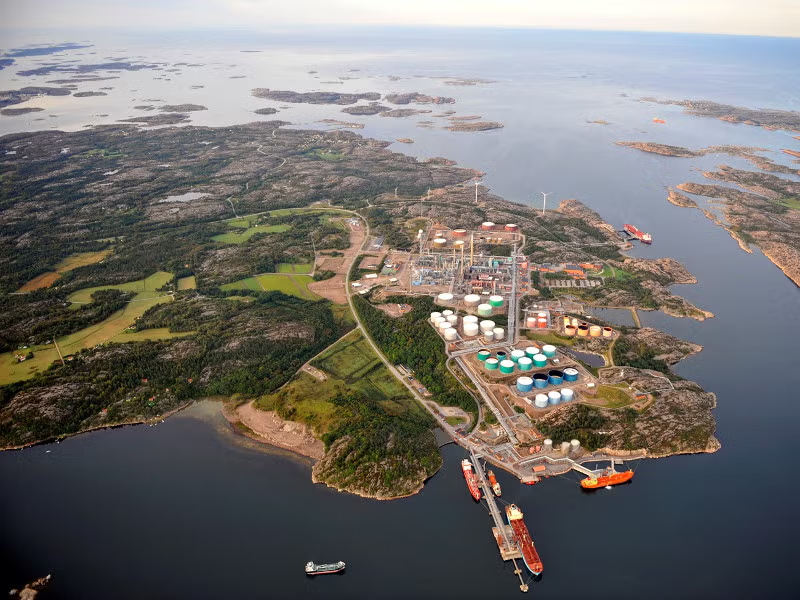Swedish oil giant Preem is using Guyana’s medium-sweet crude to fuel its flagship Lysekil refinery, linking South America’s newest oil producer to the Nordic region’s energy supply chain. Perched on the rocky coast of Brofjorden just north of Gothenburg, Preemraff Lysekil stands as Sweden’s largest and most advanced oil refinery.
Opened in 1975 and currently owned by Preem, the facility processes around 220,000 barrels of crude per day, according to NS Energy. It operates with a Nelson Complexity Index of 10, a technical measure that reflects how sophisticated a refinery is in converting crude into high-value products like diesel.
The refinery’s configuration features hydrocrackers, fluid catalytic crackers, visbreakers, vacuum distillation, and isomerization units. These are systems designed to break down even heavy crude components into lighter, more valuable fuels.
Sweden took the highest number of oil cargoes from offshore Guyana in April, according to insights from OilX. ExxonMobil-produced Liza and Unity Gold crude (both low in sulfur and medium in API gravity) have been delivered to Lysekil this year by supertankers.
Lysekil’s strategic coastal location and deepwater access allow it to handle very large crude carriers (VLCCs), and it is supported by significant storage capacity of about 8.5 million barrels underground and an additional million in day tanks.
Preem has recently accelerated efforts to make the Lysekil refinery a leader in cleaner fuel production. In 2023, the company announced plans to invest SEK 5.5 billion (approximately US$578 million) to convert part of the refinery to produce renewable diesel and sustainable aviation fuel (SAF).
“The investment enables Preem to become the largest producer of renewable aviation fuel in Northern Europe, and one of the largest producers of renewable fuels for road transportation,” Preem said in a 2023 release.
This expansion, set to be completed by 2027, will add roughly 1.2 million cubic metres of renewable fuel production capacity while phasing out an equivalent volume of fossil fuel production.
The project is backed by a €240 million (approximately US$280 million) green loan supported by European financial institutions. It forms part of Preem’s long-term plan to produce 5 million cubic metres of renewable fuel annually by 2035.
In parallel, the refinery has launched a pilot carbon capture and storage (CCS) program to trap emissions from its operations for long-term storage beneath the sea. This aligns with Sweden’s national climate goals and helps lower the carbon footprint of every barrel refined.
To enable its sustainability goals, the refinery relies on advanced units like SynSat, a hydro-treating system that removes sulfur and impurities from diesel, and the upcoming IsoCracker (ICR), which will allow co-processing of renewable feedstocks like tall oil and used cooking oil alongside fossil crude.
Guyana’s medium-sweet Liza field crudes are natural fits for Lysekil. They are helping to power Europe’s roads, aircraft, and homes, while also supporting the move to next-generation fuels that blend traditional energy with renewable alternatives.
Earlier this year, Swiss energy company Varo Energy announced a deal to buy Preem. Reuters said the move would make Varo the supplier of around 10% of Europe’s road and marine fuels and Europe’s second-largest renewable fuel producer.



